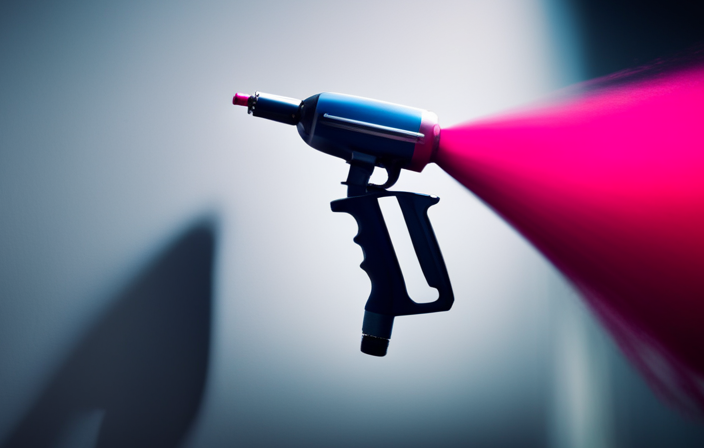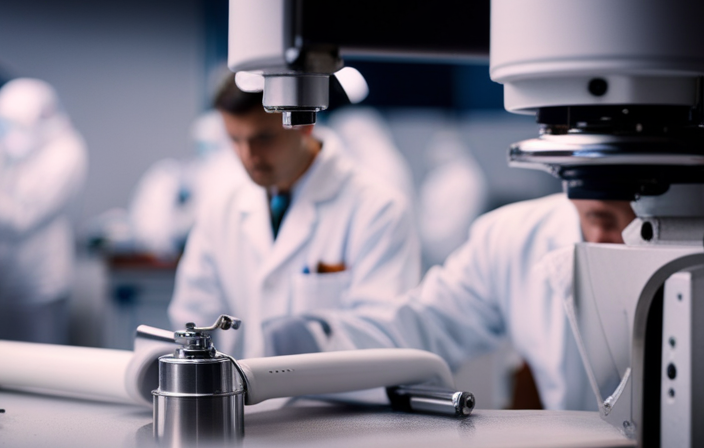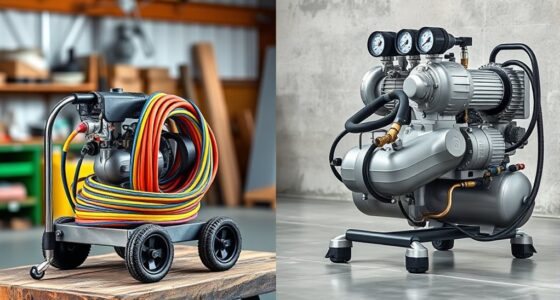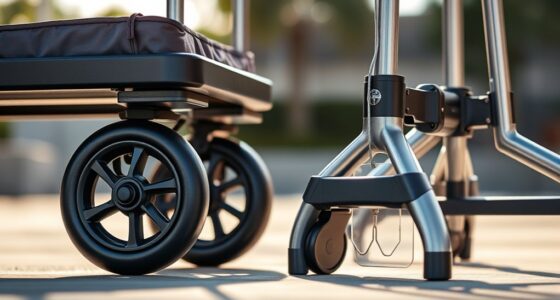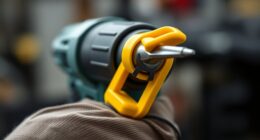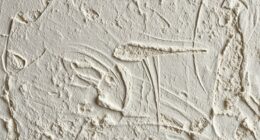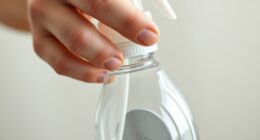I have always been intrigued by the world of painting and the endless possibilities it offers. As a dedicated do-it-yourself enthusiast, I enjoy taking on new projects and refreshing spaces with a fresh coat of paint.
Recently, I decided to venture into the world of airless paint sprayers, curious to see how they could enhance my painting experience.
One question that immediately came to mind was, ‘What type of paint do I use for an airless paint sprayer?’ With so many options available, it can be overwhelming to figure out which paint is the right fit for this particular tool. That’s why I delved into extensive research and experimentation to find the answers.
In this article, I will share my findings and provide you with a comprehensive guide on the different types of paint suitable for airless paint sprayers. From latex and oil-based paint to specialized options like enamel and metallic paint, we will explore the pros and cons of each, ensuring you make the best choice for your next painting project.
So, let’s dive in and uncover the world of paint for airless paint sprayers together!
Key Takeaways
- Latex paint and acrylic paint are suitable for airless paint sprayers as they dry quickly, are easy to clean up, and adhere well to various surfaces.
- Enamel paint provides a smooth and glossy finish, is more durable and resistant to chipping and scratching, and offers better coverage and vibrant color payoff.
- Primer paint creates a smooth and uniform base, improves paint adhesion and durability, and blocks stains from bleeding through the topcoat.
- Specialty paint, such as metallic paint and chalk paint, offers unique aesthetic options and can be applied using an airless paint sprayer. Metallic paint adds glamour and shine, while chalk paint provides a smooth matte finish and is great for achieving a distressed vintage look.
Latex Paint
Looking to achieve a flawless finish? Use latex paint with your airless paint sprayer for professional-looking results!
Latex paint is a great choice for airless paint sprayers because it’s specifically formulated to be sprayed. It’s a water-based paint that dries quickly and produces a smooth, even finish.
When using latex paint with an airless sprayer, make sure to thin it according to the manufacturer’s instructions to ensure proper atomization. The spray pattern can be adjusted to achieve different textures and coverage levels.
Latex paint is available in a wide range of colors and finishes, making it versatile for any project.
Now, let’s move on to the next section about oil-based paint and discover its unique qualities.
Oil-Based Paint
Ironically, it’s a shame that you can’t rely on oil-based paint for your airless paint sprayer. While oil-based paint has its advantages, it is not suitable for airless spray systems. The main difference between oil-based and water-based paint lies in their composition. Oil-based paint uses organic solvents as a base, while water-based paint uses water as a base.
Here’s a table that highlights the pros and cons of using oil-based paint:
| Pros | Cons |
|---|---|
| Durable | Strong odor |
| Smooth finish | Longer drying time |
| Resistant to wear and tear | Difficult cleanup |
Although oil-based paint provides a durable and smooth finish, it also comes with a strong odor and longer drying time. Additionally, cleaning up oil-based paint can be quite challenging.
Moving forward, let’s explore the benefits of using acrylic paint for your airless paint sprayer.
Acrylic Paint
Fortunately, acrylic paint offers a multitude of advantages that make it an excellent choice for your airless paint sprayer. Acrylic paint is water-based, so it dries quickly and is easy to clean up. It also has low odor and is non-toxic, making it safe to use in indoor environments.
Additionally, acrylic paint adheres well to a variety of surfaces, including wood, metal, and concrete. This versatility allows for a wide range of projects to be completed with ease. When using acrylic paint with an airless sprayer, it’s important to adjust the pressure and nozzle size to achieve the desired results.
By experimenting with different techniques, such as thinning the paint or using different spray patterns, you can achieve a smooth and even finish. Transitioning into the subsequent section about enamel paint, it’s important to note that while acrylic paint offers many benefits, enamel paint has its own unique advantages.
Enamel Paint
Enamel paint, with its smooth and glossy finish, adds a layer of elegance and sophistication to any surface it’s applied to. When comparing enamel paint to acrylic paint, there are a few key differences to consider. Enamel paint is more durable and resistant to chipping and scratching, making it ideal for high-traffic areas or surfaces that’ll be frequently touched. It also provides better coverage and a more vibrant color payoff.
To achieve the best results when using enamel paint, it’s important to follow these techniques:
1) Use a high-quality brush or sprayer for application.
2) Apply thin, even coats to prevent dripping or pooling.
3) Allow each coat to dry completely before adding additional layers.
4) Consider using a primer to improve adhesion and enhance the longevity of the paint job.
Transitioning into the next section about primer paint, it’s crucial to prepare the surface properly before applying any type of paint.
Primer Paint
When it comes to painting, primer paint is an essential step in the process. It prepares surfaces for painting by creating a smooth and uniform base. Additionally, primer paint improves paint adhesion and durability, ensuring that the paint will adhere properly and last longer.
Furthermore, primer paint also has the ability to block stains, preventing them from bleeding through the topcoat. Overall, using primer paint is crucial for achieving a professional and long-lasting paint job.
Prepares surfaces for painting
Get ready to transform your surfaces with a fresh coat of paint by prepping them like a pro using the right products! To ensure a smooth and long-lasting finish, proper surface preparation is key. Here are three essential steps to get your surfaces ready for painting:
-
Clean the surface: Remove any dirt, grease, or grime from the surface using a mild detergent and water. This step ensures that the paint adheres properly to the surface.
-
Repair any imperfections: Fill in any cracks, holes, or dents using a suitable filler or spackle. Smooth out the surface with a putty knife and sand it down to create a seamless finish.
-
Sand the surface: Use sandpaper or a sanding block to lightly sand the surface. This step helps to remove any roughness, old paint, or imperfections, allowing the new paint to adhere better.
By following these surface preparation techniques, you’ll improve paint adhesion and durability, ensuring a professional-looking finish.
Improves paint adhesion and durability
Proper surface preparation is the key to unlocking a paint job that clings and endures like a loyal friend. When it comes to improving paint adhesion and durability, there are a few important steps to follow.
First, make sure to clean the surface thoroughly, removing any dirt, grease, or loose paint.
Next, consider using a primer specifically designed to improve paint adhesion. This will create a smooth base for the paint and help it adhere better to the surface.
Additionally, using a high-quality paint with good coverage will ensure an improved paint finish.
By taking these steps, you can achieve a paint job that not only looks great but also lasts longer.
Transitioning into the next section, using a primer that blocks stains and provides a smooth base is another important step in achieving a flawless paint job.
Blocks stains and provides a smooth base
Achieve a flawless paint job with a primer that effortlessly blocks stains and provides a smooth base, giving your walls a professional finish that will leave your guests in awe.
When using an airless paint sprayer, it’s crucial to choose a primer that excels in blocking stains and creating a smooth surface for the paint to adhere to. By blocking stains, the primer prevents any discoloration or bleed-through from previous coatings, ensuring a clean and vibrant final result.
Additionally, a smooth base allows the paint to glide on effortlessly, reducing the chances of streaks or uneven coverage. This type of primer is specially formulated to enhance paint adhesion, durability, and overall finish.
Now that your walls are flawlessly primed, let’s move on to the next section about spray paint.
Spray Paint
Spray paint, with its quick and effortless application, allows you to effortlessly transform any surface into a vibrant work of art. When using an airless paint sprayer, it’s important to choose the right type of spray paint to achieve the best results.
There are various techniques that can be used with spray paint, such as layering colors, creating gradients, or even stenciling patterns. The best brands of spray paint, like Rust-Oleum and Montana, provide a wide range of colors and finishes to suit your needs. These brands also offer formulas that are specifically designed for outdoor use, providing long-lasting protection against the elements.
As we move on to discuss epoxy paint, it’s important to understand the unique properties and applications of this type of paint.
Epoxy Paint
When it comes to epoxy paint, I must say it’s an extremely durable and resistant option. This type of paint is ideal for concrete floors and metal surfaces. It provides excellent protection against wear and tear. However, it’s important to note that proper ventilation is crucial during the application process to ensure a safe environment.
Extremely durable and resistant to chemicals
Built to withstand heavy wear and tear, the paint applied with an airless paint sprayer forms a protective barrier that is incredibly tough and impervious to chemicals. This type of paint, known as epoxy paint, is extremely durable and resistant to chemicals, making it an excellent choice for a variety of surfaces. Whether you are painting concrete floors or metal surfaces, epoxy paint provides long-lasting protection that can withstand harsh conditions.
To further illustrate the benefits of epoxy paint, consider the following table:
| Benefits of Epoxy Paint |
|---|
| High durability |
| Chemical resistance |
| Easy to clean |
| Versatile application |
With its exceptional durability and chemical resistance, epoxy paint offers superior protection for surfaces that are subjected to heavy use. This makes it ideal for concrete floors and metal surfaces that require a tough and long-lasting coating. By using an airless paint sprayer, you can easily apply this resilient paint, ensuring a professional finish that will stand the test of time.
Ideal for concrete floors and metal surfaces
Epoxy paint, with its exceptional durability and chemical resistance, is the perfect choice for concrete floors and metal surfaces. It’s ideal for areas subjected to high foot traffic or heavy machinery, providing unmatched protection against wear and tear. When applied to concrete floors, epoxy paint creates a seamless and glossy finish that not only enhances the appearance but also improves durability. For metal surfaces, it acts as a protective barrier against rust and corrosion, extending the material’s lifespan.
To achieve the best results, it’s important to properly prepare the surface before applying the epoxy paint. This ensures a clean and smooth substrate. It’s worth noting that proper ventilation is necessary for a safe working environment during the application of epoxy paint. Taking necessary precautions during the painting process is crucial.
Requires proper ventilation during application
To ensure a safe working environment and protect your respiratory health, make sure you have proper ventilation when applying epoxy paint. Proper safety precautions should always be taken when working with any type of paint, but it is particularly important when using epoxy paint due to its strong fumes. Ventilation helps to dissipate these fumes and prevent them from accumulating in the air, reducing the risk of inhaling harmful chemicals.
Proper ventilation can be achieved by opening windows and doors, using fans or exhaust systems, and wearing a respirator mask. To give you a better idea of the importance of proper ventilation, here is a table that highlights the potential health risks associated with inadequate ventilation when using epoxy paint:
| Health Risks | Symptoms |
|---|---|
| Headaches | Dizziness, nausea |
| Respiratory irritation | Coughing, wheezing, shortness of breath |
| Eye and skin irritation | Redness, itching, burning sensation |
| Allergic reactions | Sneezing, runny nose, skin rashes, hives |
By following these proper safety precautions and ensuring proper ventilation, you can minimize health risks and create a safer working environment. Now let’s move on to discussing another type of paint: chalk paint.
Chalk Paint
If you’re going for that trendy, shabby-chic look and want to use your airless paint sprayer, chalk paint is the way to go. Chalk paint is a versatile option that adheres well to various surfaces and provides a smooth, matte finish. It’s known for its ability to create a distressed, vintage look, perfect for achieving that rustic charm.
When using an airless paint sprayer with chalk paint, make sure to thin it down to the manufacturer’s recommended consistency for optimal results. The sprayer should be set at a low pressure to prevent overspray and achieve better control.
Chalk paint is available in a wide range of colors, allowing you to customize your project to your liking.
Now, let’s move on to the next section about metallic paint.
Metallic Paint
When it comes to adding a touch of glamour and shine to your space, metallic paint is the way to go. This type of paint creates a shimmering and reflective effect that instantly catches the eye.
Whether you’re looking to accentuate a feature wall or give new life to furniture, metallic paint is a great choice. However, it’s important to note that achieving full coverage may require multiple coats, so be prepared to put in a bit of extra effort for that perfect finish.
Adds a shimmering and reflective effect
Adding a touch of sparkle and shine, a shimmering and reflective effect can be achieved effortlessly with the right type of paint for an airless paint sprayer. To create stunning shimmering paint effects and reflective finishes, consider using metallic paint. Here are five reasons why metallic paint is the perfect choice:
- Versatility: Metallic paint can be used on various surfaces, including walls, furniture, and even accessories.
- Depth and dimension: The shimmering particles in metallic paint create a sense of depth and add visual interest to any space.
- Light reflection: Metallic paint reflects light, making a room feel brighter and more spacious.
- Modern and chic: Metallic finishes add a contemporary touch to any interior, elevating the overall aesthetic.
- Accentuating details: Metallic paint highlights architectural details or furniture pieces, making them stand out beautifully.
With its ability to transform any surface, metallic paint isn’t just suitable for accent walls and furniture but also ideal for creating a captivating and glamorous atmosphere.
Suitable for accent walls and furniture
To achieve a sophisticated and glamorous look, consider utilizing metallic paint for accent walls and furniture. Metallic paints add a stunning shimmering and reflective effect that instantly transforms any space.
When it comes to accent wall colors, metallic paints offer a wide range of options, from subtle silver and gold tones to bold and vibrant metallic hues like copper and bronze. These paints are specifically designed to create a striking visual impact, making them perfect for creating focal points in a room.
Additionally, metallic paint techniques can be used to highlight specific areas or details on furniture, adding a touch of elegance and flair to your pieces. However, it’s important to note that metallic paint often requires multiple coats for full coverage, ensuring a flawless and lasting finish.
Transitioning into the next section, let’s explore how to achieve the best coverage with metallic paint.
Requires multiple coats for full coverage
Achieving a flawless and lasting finish with metallic paint can be a labor of love, requiring multiple coats for full coverage. To ensure a smooth and even application, it’s essential to apply several thin coats rather than one thick coat. This allows the paint to adhere properly and prevents drips or uneven areas.
When using metallic paint, here are some key points to keep in mind:
- Prepare the surface by sanding and priming it for optimal adhesion.
- Use a high-quality metallic paint specifically designed for airless paint sprayers.
- Apply the paint in light, even strokes, overlapping each pass for consistent coverage.
- Allow each coat to dry completely before applying the next one.
- Consider using a clear topcoat to protect the metallic finish and enhance its durability.
Transitioning into the next section about ‘specialty paint,’ it’s important to explore the range of options available for different projects and surfaces.
Specialty Paint
Specialty paint, such as metallic or textured finishes, can be effectively applied using an airless paint sprayer. These types of paint offer unique aesthetic options for different surfaces and can add depth and dimension to any project.
When using specialty paint with an airless paint sprayer, it’s important to consider the specific uses and application techniques. Metallic finishes, for example, require careful application to ensure an even coat and prevent streaking. Textured finishes, on the other hand, may require adjustments to the sprayer’s nozzle size to achieve the desired texture.
It’s also important to properly clean the sprayer after using specialty paint to avoid any residue or clogs. Overall, an airless paint sprayer provides a convenient and efficient method for applying specialty paint, allowing for creative and customized finishes.
Frequently Asked Questions
Can I use water-based latex paint with an airless paint sprayer?
Using water-based latex paint with an airless paint sprayer is a great choice! It’s easy to clean up, dries quickly, and emits fewer fumes. However, oil-based paint offers better durability and is ideal for certain surfaces.
What are the advantages of using oil-based paint with an airless paint sprayer?
The advantages of using oil-based paint with an airless paint sprayer include better adhesion, durability, and a smoother finish. Oil-based paint also has a longer drying time, which allows for better leveling and fewer visible brush or roller marks.
Is it possible to use acrylic paint with an airless paint sprayer?
Yes, it is possible to use acrylic paint with an airless paint sprayer. Acrylic paint is water-based, dries quickly, and is easy to clean up. However, oil-based paint offers better durability and adhesion.
Can I apply enamel paint with an airless paint sprayer?
Enamel paint can be applied with an airless paint sprayer. To ensure the best results, follow these best practices: thin the paint if necessary, use a smaller tip size, and adjust the pressure for a smooth and even application.
Is it necessary to use primer paint before using an airless paint sprayer?
Using primer paint with an airless paint sprayer can enhance the adhesion and durability of the topcoat, resulting in a smoother and longer-lasting finish. However, it adds an extra step and cost to the painting process. Follow these tips for achieving smooth finishes: [Keywords: Pros and cons of using primer paint with an airless paint sprayer, Tips for achieving smooth finishes with an airless paint sprayer]
Conclusion
In conclusion, when using an airless paint sprayer, it’s crucial to choose the right type of paint for optimal results. Whether it’s latex, oil-based, acrylic, enamel, primer, epoxy, chalk, metallic, or specialty paint, each has its own unique properties and uses.
Just like a well-oiled machine, selecting the appropriate paint for your airless sprayer ensures smooth and flawless application. This results in a finished product that’s as smooth as silk. So remember, choose wisely and watch your project come to life with vibrant colors and professional-grade precision.
